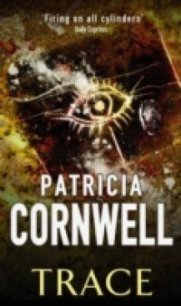The Last Precinct - Cornwell Patricia (читаем книги онлайн TXT) 📗
"Did you get that from Anna or Righter?" I bitterly ask her.
She starts down the hallway. "Pretty soon, Dr. Kay Scar-petta, you're gonna get a thick skin," she says. "I'm making that my mission."
Chapter 26
BLOOD IS LIFE. IT BEHAVES LIKE A LIVING CREA-ture.
When the circulatory system is breached, the blood vessel contracts in a panic, making itself smaller in an attempt to diminish the blood flowing through it and out of the tear or cut. Platelets immediately rally to plug the hole. There are thirteen clotting factors and together they instigate their alchemy to stop blood loss. I have always thought that blood is bright red for a reason, too. It is the color of alarm, of emergency, of danger and distress. If blood were a clear fluid like sweat, we might not notice when we are injured or when someone else is. Bright red boasts of blood's importance, and it is the siren that sounds when the greatest of all violations has occurred: when another person has maimed or taken a life.
Diane Bray's blood cries out in drips and droplets, splashes and smears. It tattles on who did what and how and in some instances, why. The severity of a beating affects the velocity and volume of blood flying through the air. Cast-off blood from the backswing of a weapon tells the number of blows, which in this case were at least fifty-six. That is as precisely as we can calculate, because some blood spatters overlay other spatters and sorting out how many might be on top of each other is like trying to figure out how many times a hammer struck a nail to drive it into a tree. The number of blows mapped in this room are consistent with what Bray's body told me. But again, so many fractures overlaid others and so much bone was utterly crushed that I, too, lost count. Hate. Incredible lust and rage.
There has been no attempt to clean up what happened in the master bedroom, and what Berger and I find contrasts profoundly with the stillness and sterility of the rest of the house. First, there is what looks like a massive bright pink web spun by crime scene technicians who have used a method called stringing to find the trajectories of blood droplets that are simply everywhere. The objective is to determine distance, velocity and angle, to conjure up through a mathematical model the exact position of Bray's body when each blow was struck. The results look like a strange modern art design, a weird fuchsia geometry that leads the eye to walls, ceiling, floor, antique furniture and the four ornate mirrors where Bray once admired her spectacular, sensual beauty. Coagulated puddles of blood on the floor are now hard and thick like dried molasses, and the king-size bed where Bray's body was so crudely displayed looks as if someone dashed cans of black paint across the bare mattress.
I feel Berger's reaction as she stares. She is silent as she absorbs what is ghastly, truly incomprehensible. She becomes charged with a peculiar energy that only people, especially women, who battle violence for a living can really understand. "Where are the bed linens?" Berger opens the accordion file. "Were they turned in to the labs?"
"We never found them," I reply, and I am reminded of the motel room at the campground. Those bed linens are missing, too. Chandonne claims bed linens disappeared from his apartment in Paris, I recall his saying.
"Removed before or after she was killed?" Berger slips photographs out of an envelope.
"Before. That's apparent from the bloody transfers on the bare mattress." I step inside the room, moving around strings that point accusingly at Chandonne's crime like long slender fingers. I show Berger unusual parallel smears on the mat- tress, the bloody stripes transferred by the coil handle of the chipping hammer when Chandonne set it down on the mattress between or after blows. Berger doesn't see the pattern at first. She stares, slightly frowning as I decipher a chaos of dark stains that are handprints and smears where I believe Chandonne's knees may have been as he was straddling the body and acting out his horrific sexual fantasies. "These patterns wouldn't have been transferred to the mattress if there were linens on the bed at the time of the attack," I explain.
Berger studies a photograph of Bray on her back, sprawled across the middle of the mattress, black corduroy pants and belt on, but no shoes and socks, naked from the waist up, a smashed gold watch on her left wrist. A gold ring on her battered right hand is driven into the bone of her finger.
"So either there were no linens on the bed at the time, or he removed them for some reason," I add.
"I'm trying to envision that." Berger scans the mattress. "He's in the house. He's forcing her down the hallway, back to this area, to the bedroom. There's no sign of a struggle_no evidence he injured her until they get in here and then boom! All hell breaks loose. My question is this: He gets her back here and then says, 'Hey, wait a second while I strip the bed'? He takes time to do that?"
"By the time he got her on the bed, I seriously doubt she was talking or able to run. If you look here and here and here and here." I refer to segments of string taped to blood droplets that begin at the bedroom's entrance. "Cast-off blood from the backswing of the weapon_in this case, the chipping hammer."
Berger follows the bright pink string design and tries to correlate what it indicates with what she is seeing in photographs she goes through. "Tell me the truth," she says. "Do you really put a lot of credence in stringing? I know cops who think it's bullshit and a huge waste of time."
"Not if the person knows what he's doing and is faithful to the science."
"And the science is?"
I explain to her that blood is ninety-one percent water. It adheres to the physics of liquid, and it is affected by motion and gravity. A typical drop of blood will fall 25.1 feet per second. Stain diameter increases as the dropping distance increases. Blood dripping into blood produces a corona of spatters around the original pool. Splashed blood produces long, narrow spatters around a central stain, and as blood dries, it goes from bright red to reddish-brown to brown to black. I know experts who have spent their entire careers affixing medicine droppers of blood to ring stands, using plumb lines, squeezing or dripping or pouring or projecting blood onto a variety of target surfaces from a variety of angles and heights, and walking through puddles and stamping and slapping, and experimenting. Then, of course, there is the math, the straight-line geometry and trigonometry for figuring out point of origin.
The blood in Diane Bray's bedroom, at a glance, is a videotape of what happened, but it is in a format that is unreadable unless we use science, experience and deductive reasoning to sort it out. Berger also wants me to use my intuition. Again, she wants me to edge beyond my clinical boundaries. I follow dozens of strands of string that connect spatters on the wall and the door frame and converge to a point in mid-air. Since you can't tape string to thin air, the crime scene technicians moved an antique coat rack in from the foyer and taped the string some five feet from the base of it to determine the point of origin. I show Berger where Bray probably was standing when Chandonne struck the first blow.
"She was several feet inside the door," I say. "See this void area here?" I point out a space on the wall where there is no blood, just spatters in an aura all around it. "Her body or his blocked blood from hitting that part of the wall. She was upright. Or he was. And if he was upright, we can assume she was because you don't stand straight up and beat someone who is on the floor." I stand straight up and show her. "Not unless you have arms six feet long. Also, the point of origin is more than five feet off the floor, implying this is where the blows were connecting with their target. Her body. Most likely, her head." I move several feet closer to the bed. "Now she's down."



